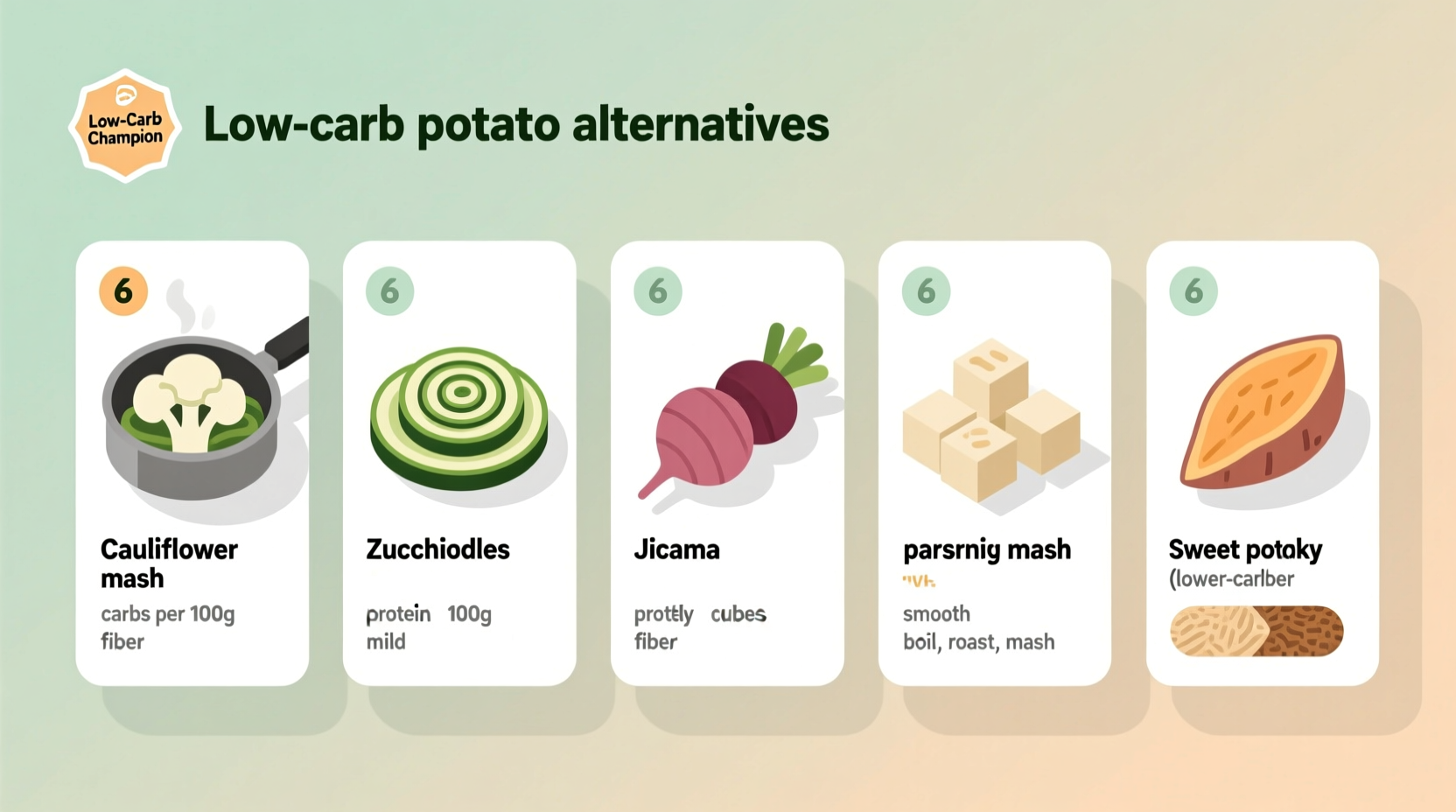For those following low-carb eating patterns, the question of whether potatoes fit into their meal plan is both practical and frustrating. This guide delivers science-backed insights about potato carb content, preparation techniques that minimize glycemic impact, and the most viable alternatives for different dietary goals.
Understanding Potato Carb Composition
Potatoes are primarily composed of starch, a complex carbohydrate that breaks down into glucose during digestion. The exact carb count varies significantly by variety and preparation method. According to USDA FoodData Central, a medium Russet potato (150g) contains approximately 29g net carbs, while the same size sweet potato contains 26g net carbs.
| Potato Variety | Net Carbs (per 100g) | Glycemic Index | Best For |
|---|---|---|---|
| Russet | 15g | 85 | Occasional moderate-carb diets |
| Sweet Potato | 17g | 44-94 | Liberal low-carb approaches |
| Carisma | 10g | 53 | Lower-carb diets |
| Yukon Gold | 14g | 66 | Occasional moderate-carb diets |
This comparison reveals why most standard potatoes don't align with keto guidelines (typically 20-50g net carbs daily). The Carisma variety, developed through selective breeding in Canada, offers the lowest carb option among true potatoes, though still challenging for strict keto followers.
Smart Preparation Techniques That Reduce Carb Impact
While you can't change a potato's fundamental carb content, certain preparation methods can moderate their glycemic effect:
- Cooling after cooking: Allowing cooked potatoes to cool creates resistant starch, which behaves more like fiber during digestion. Research published in the Journal of Nutrition and Metabolism shows this technique can reduce the glycemic impact by up to 25%.
- Pairing with fat and acid: Combining potatoes with healthy fats (like olive oil) and acidic components (vinegar or lemon juice) slows glucose absorption.
- Partial substitution: Blending half potato with low-carb alternatives like cauliflower creates familiar texture with reduced carb load.

Low-Carb Alternatives That Mimic Potato Texture
When strict carb counting is necessary, these alternatives provide similar mouthfeel with dramatically lower carbohydrate content:
Cauliflower: The Versatile Stand-In
With just 3g net carbs per 100g, cauliflower has become the go-to potato substitute. When properly prepared (roasted with garlic or riced and steamed), it mimics mashed potato texture surprisingly well. The American Diabetes Association recommends cauliflower as a primary vegetable substitute for those managing carbohydrate intake.
Turnips: The Underrated Option
Turnips offer 4g net carbs per 100g and maintain their structure when boiled or roasted. Their slightly peppery flavor works well in potato salad alternatives or as roasted "potato" wedges. Historical records show turnips were commonly used as potato substitutes during World War II rationing periods when potatoes were scarce.
Radishes: The Shocking Mimic
When roasted, radishes transform from spicy to potato-like in both texture and mild flavor, with only 2g net carbs per 100g. This preparation method was documented in traditional European cooking texts as early as the 18th century when potatoes were still considered suspicious by many communities.
Diet-Specific Recommendations
Whether potatoes can fit into your eating pattern depends entirely on your specific carb threshold:
- Keto (20-50g net carbs daily): Traditional potatoes generally exceed daily carb limits. Consider small portions of Carisma potatoes (50g) as rare exceptions, or focus on alternatives like cauliflower mash.
- Moderate low-carb (50-100g net carbs): One small potato (100g) can fit within your daily allowance, especially when prepared with cooling techniques to increase resistant starch.
- Liberal low-carb (100-150g net carbs): Potatoes become more feasible, particularly when balanced with other lower-carb vegetables throughout the day.
It's crucial to recognize that individual responses to carbohydrates vary significantly. Continuous glucose monitoring studies published in The American Journal of Clinical Nutrition demonstrate that two people consuming identical potato portions can have dramatically different blood glucose responses based on factors like gut microbiome composition and metabolic health.
Common Misconceptions About Potatoes and Low-Carb Diets
Several persistent myths cloud the discussion about potatoes in low-carb eating:
- "Sweet potatoes are keto-friendly": Despite their nutritional benefits, sweet potatoes contain similar carb counts to white potatoes and don't fit within standard keto parameters.
- "Peeling reduces carb content significantly": While the skin contains some fiber, most carbohydrates reside in the potato flesh, so peeling offers minimal carb reduction.
- "All potatoes affect blood sugar equally": Different varieties have varying glycemic indexes, with waxy potatoes generally having lower impact than starchy varieties.
Consumer surveys conducted by the International Food Information Council reveal that 68% of low-carb dieters completely eliminate potatoes from their diet, while 22% consume them occasionally in controlled portions. The remaining 10% incorporate potatoes regularly but adjust other carbohydrate sources accordingly.
Practical Implementation Guide
For those wanting to occasionally include potatoes while maintaining low-carb goals:
- Choose lower-carb varieties like Carisma when available
- Limited portions to 50-100g cooked weight depending on your daily carb budget
- Cook and cool potatoes before eating to increase resistant starch
- Pair with protein and healthy fats to moderate blood sugar response
- Track your personal response using glucose monitoring if possible
Remember that dietary context matters most. A small potato served with grilled chicken and roasted vegetables creates a more balanced meal than potatoes served with other high-carb foods. The key to successful low-carb eating isn't elimination of specific foods but thoughtful integration within your overall carb budget.











 浙公网安备
33010002000092号
浙公网安备
33010002000092号 浙B2-20120091-4
浙B2-20120091-4